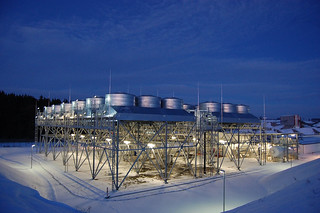Renewable energy from wind and solar went from impossibly expensive to nearly 10% of American electricity in less than 20 years. What's ahead may be even more astounding.
Geothermal energy could replace nuclear power, with help from fr***ing.
 |
| Light Snow, by Giulia Bonifazi, Brescia Italy. Honorable Mention, GRC Photo Contest 2018 |
Nuclear power is currently the nation's largest source of carbon-free power, comprising roughly 19% of the country's total electricity consumption. But it's in trouble. Atomic energy facilities simply can't compete economically with lower-priced natural gas and wind power. While some states have provided subsidies to reward nuclear power plants for providing carbon-free electricity, that can't continue indefinitely. By 2030, the country's aging fleet will be long overdue for retirement.
Help could come from a completely unexpected source: geothermal energy. The U.S. Department of Energy is quietly funding the development of a novel technology called enhanced geothermal systems (EGS). By using fracking technology pioneered and perfected for use in shale oil and gas regions, it may be possible to create geothermal energy wells across the United States that can produce massive amounts of clean energy.
In what can only be proof that we are indeed living in a simulation, the numbers are almost too good to be true. The United States has an estimated 100,000 megawatts of easily accessible next-generation geothermal potential -- exactly the amount of nuclear power currently operating. Geothermal is the second most efficient energy source by a mile, right behind nuclear power, and the U.S. DOE is targeting a deployment date of 2030 -- exactly when the nation will need to replace its nuclear fleet.